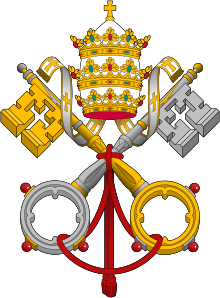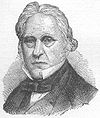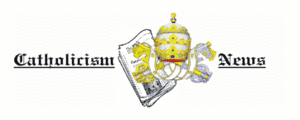Introduction The Catholic Church, also known as the Roman Catholic Church, is the largest Christian church, with 1.28 to 1.39 billion baptized Catholics worldwide as of 2024. It is among the world's oldest and largest international institutions and has played a prominent role in the history and development of Western civilization. The church consists of 24 sui iuris churches, including the Latin Church and 23 Eastern Catholic Churches, which comprise almost 3,500 dioceses and eparchies around the world. The pope, who is the bishop of Rome, is the chief pastor of the church. The Diocese of Rome, known as the Holy See, is the central governing authority of the church. The administrative body of the Holy See, the Roman Curia, has its principal offices in Vatican City, which is a small, independent city-state and enclave within the city of Rome, of which the pope is head of state. The core beliefs of Catholicism are found in the Nicene Creed. The Catholic Church teaches that it is the one, holy, catholic and apostolic church founded by Jesus Christ in his Great Commission, that its bishops are the successors of Christ's apostles, and that the pope is the successor to Saint Peter, upon whom primacy was conferred by Jesus Christ. It maintains that it practises the original Christian faith taught by the apostles, preserving the faith infallibly through scripture and sacred tradition as authentically interpreted through the magisterium of the church. The Roman Rite and others of the Latin Church, the Eastern Catholic liturgies, and institutes such as mendicant orders, enclosed monastic orders and third orders reflect a variety of theological and spiritual emphases in the church. Of its seven sacraments, the Eucharist is the principal one, celebrated liturgically in the Mass. The church teaches that through consecration by a priest, the sacrificial bread and wine become the body and blood of Christ. The Virgin Mary is venerated as the Perpetual Virgin, Mother of God, and Queen of Heaven; she is honoured in dogmas and devotions. Catholic social teaching emphasizes voluntary support for the sick, the poor, and the afflicted through the corporal and spiritual works of mercy. The Catholic Church operates tens of thousands of Catholic schools, universities and colleges, hospitals, and orphanages around the world, and is the largest non-government provider of education and health care in the world. Among its other social services are numerous charitable and humanitarian organizations. (Full article...) Selected article
 The Papal conclave of 2005 was convened due to the death of Pope John Paul II on April 2, 2005. After his death, the cardinals who were in Rome met and set a date for the beginning of the conclave to elect John Paul's successor. The conclave began on April 18, 2005 and ended on the following day after four ballots. Eligible members of the College of Cardinals of the Roman Catholic Church (those who were less than 80 years of age at the time of the death of Pope John Paul II) met and elected Joseph Cardinal Ratzinger as the new Pope. After accepting his election, he took the regnal name Pope Benedict XVI.Proceedings on April 18 consisted of a morning Mass for the Election of the Roman Pontiff (Latin Pro Eligendo Romano Pontifice). In the afternoon the Cardinal electors assembled in the Hall of Blessings in St Peter's Basilica and from there went in solemn procession to the Sistine Chapel, where, after the singing of the hymn Veni Creator Spiritus, each Cardinal took the prescribed oath.
Selected image
 Credit: JeremyA Our Lady of Sorrows Basilica (officially: The Basilica Of Our Lady Of Sorrows) is a Roman Catholic house of worship in the west side neighborhoods of Chicago, Illinois in the United States. Located at 3121 West Jackson Boulevard, it is along with St. Hyacinth and Queen of All Saints, one of only three churches in Illinois designated by the Pope with the title of basilica. Selected biography
 John Chrysostom (349– ca. 407, Greek: Ιωάννης ο Χρυσόστομος, Latin: Ioannes Chrysostomos) was the archbishop of Constantinople. He is known for his eloquence in preaching and public speaking, his denunciation of abuse of authority by both ecclesiastical and political leaders, the Liturgy of St. John Chrysostom, and his ascetic sensibilities. After his death (or, according to some sources, during his life) he was given the Greek surname chrysostomos, meaning "golden mouthed", rendered in English as Chrysostom.The Orthodox Church and Eastern Catholic Churches honor him as a saint (feast days: November 13 and January 27) and count him among the Three Holy Hierarchs (feast day, January 30), together with Saints Basil the Great and Gregory the Theologian. He is recognized by the Roman Catholic Church as a saint and a Doctor of the Church.
Did you know...

Related portalsFeast Day of November 18
Along with the founder, Madeleine-Sophie Barat, Duchesne was an early member of the Society of the Sacred Heart and established the congregation's first communities in the United States. She spent the last half of her life teaching and serving the people of the Midwestern United States, which was at that time considered the western frontier of the nation. (Full article...)
Selected quote

News
SubcategoriesTopics
The Holy Bible:
Particular Churches (grouped by liturgical rite):
Things you can do
External resourcesWikiProjectsAssociated WikimediaThe following Wikimedia Foundation sister projects provide more on this subject:
Discover Wikipedia using portals |
































